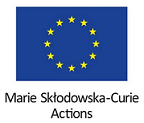PRIUS-TE: Printing Ultrasound Stimulated piezoelectric materials for Tissue Engineering

Specific programme: Marie Sklodowska-Curie Individual Fellowships (IF)
UPV/EHU Partner Status: Coordinator
UPV/EHU PI: Alejandro Müller
Project start: 01/04/2020
Project end: 31/03/2022
Brief description: In an aging society, our quality of life depends significantly in our capability to regenerate or engineer replacements for diseased and damaged tissues. One of these is the osteochondral interface. Over 30% of the population above the age of 65 is affected by osteochondral defects, being the most common cause of disability in older adults. PRIUS-TE (Printing Ultrasound Stimulated piezoelectric materials for Tissue Engineering) aims to regenerate the osteochondral interface with the use of hierarchical piezoelectric materials capable of stimulating mechanically, electrically and chemically the cells. Cartilage is unable to adequately self-regenerate due to its avascular character, the high content of extra cellular matrix (ECM) and the quiescent character of cells within (chondrocytes). Damage or diseases such as osteoarthritis (OA) lead to degeneration, reaching subchondral bone and generating an osteochondral defect. Clinical treatments rely on microfracture techniques that recruit tissue-specific progenitor (or stem) cells from the bone marrow, and form a de-novo cartilaginous tissue. However, the recruited cells are not able to self-organize and differentiate into phenotypically coherent cells. This results in the formation of unstructured and isotropic tissues with impaired mechanical properties that fail at long term. Current TE strategies are mainly based on isotropic materials that disregard the intrinsic multi-zonal character of the native tissue. PRIUS-TE takes inspiration from the structure and intrinsic properties of the osteochondral interface. It is based on hierarchical scaffolds that mimic the structure, cell microenvironment and fixed ionic charge responsible of the mechanical properties of the native tissue. These gradient, hierarchical and piezoelectric scaffolds will stimulate the recruited cells electrically, mechanically and chemically promoting the layer-specific cell growth, differentiation and the formation of a coherent tissue.
